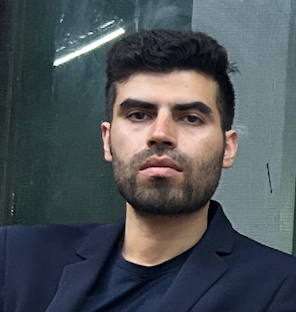Reading facial expressions is something comes naturally to most of us. But if you learn to observe them more carefully, you’ll take your communication skills to the next level.
A person’s face is the seal of his identity. Our face is what gives us our distinct identity and separates us from others. You are you and anyone else because of your distinct facial features.
If all of us had the same face, there’s no doubt that interpersonal communication among humans would’ve been excruciatingly difficult, if not impossible.
This is why when communicating with someone we spend most of the time looking at the person’s face. This assures the person that we’re addressing them and them only, not anyone else.
And since we spend so much time looking at someone’s face whilst communicating, the human face evolved a plethora of expressions so that inter-personal communication could become more effective.
According to a study done by psychologist Paul Ekman, human beings are capable of making more than ten thousand different facial expressions in communication. No wonder most non-verbal communication happens via the facial expressions.

Imagine, if there were no facial expressions, how our day-to-day interactions would be like. There would be no way of knowing how a person feels about what’s going on except body gestures and verbal communication.
Also, there would be no way to communicate how we feel about something, except body gestures and verbal communication.
Since most people don’t care or know much about body language, they’d only rely on verbal communication and all communication experts know that spoken words are the least reliable mode of communication.
You can twist and manipulate words whichever way you want but lying with facial expressions and body gestures is not an easy task.
Changed facial expression = Changed emotional state
A change in a person’s facial expression always indicates a change in their emotional state and a change in the emotional state invariably leads to a change in facial expressions- it’s mutual cause-and-effect.
Say you were reading a newspaper and your mood was low due to the obnoxious negative news that seemed to fill every page. Suddenly, you stumble on a news article describing the win of your favourite football team.
At this point, your emotional state is bound to change and so will your facial expression. A smile is likely to appear on your face. This instant onset of facial expression in response to a changed emotional state is an unconscious process.
You can’t stop the smile from appearing. When it has already appeared and you are conscious of it, only then you gain the power to discontinue it.
The reverse is also true.
If you make a facial expression deliberately, then you’ll begin to experience the emotion that is associated with that expression.
Just like assuming a confident body language posture makes you feel more confident, making a happy face will induce happy emotions in you within seconds, and making a sad face will make you sad.
You can’t feel an emotion until its corresponding expression appears on your face. That’s how powerful facial expressions are in communication.
For example, if you underwent a plastic surgery that physically prevented you from smiling, you’re less likely to experience happiness.
Even if you do experience some happiness it will be greatly inhibited by your inability to smile. Similarly, if a surgery changes your facial muscles in a way that prevents you from frowning, you’ll experience less anger and sadness.
Facial expressions are contagious
This follows from the fact that emotions are contagious. We tend to transfer our emotional state to those who we come into contact with and this happens via our facial expressions.
Spend some time with a depressed person and you’ll start feeling depressed and your face will show a sad expression. Spend some time with a happy person and his happiness will rub off on you and your face will show a smile.
If there were no facial expressions, I doubt if emotions could be transferred from one person to the other. It is the facial expressions that enable this transfer. We copy the facial expressions that other people make and this makes us feel the same emotions that they’re feeling.
We even copy the facial expressions of people we spent most of our time with. If you’re observant enough, I’m sure that at least once in your life you’ve had that experience where you made a facial expression that you knew wasn’t yours.
You realize that you picked it up from a sibling or a parent or a co-worker or a friend or even an actor that you saw on TV. I’ve caught myself doing this many times, wondering what entity inside of me made me do it and thinking, “Wow! That was not my expression. I’m a freaking impostor”.
Married couples who’re close to each other and have spent a long time together copy each others’ facial expressions extensively to the point that they begin to look alike.
The theory is that making similar facial expressions over time builds muscle definition in the same areas of the face, resulting in similar facial features.
Final thoughts
The human face is like a broadcasting station of the mind. What’s on your face often reflects accurately what’s on your mind. However, since everyone relies on facial expressions so much, they’re easier to manipulate in order to convey the information that one wants to convey.
Learning about the different facial expressions and what emotional states they convey is of crucial importance in honing your non-verbal communication skills.
This website provides you with all the information that you need, covering the most subtle details in the most succinct way humanly possible. (See Learning body language)
